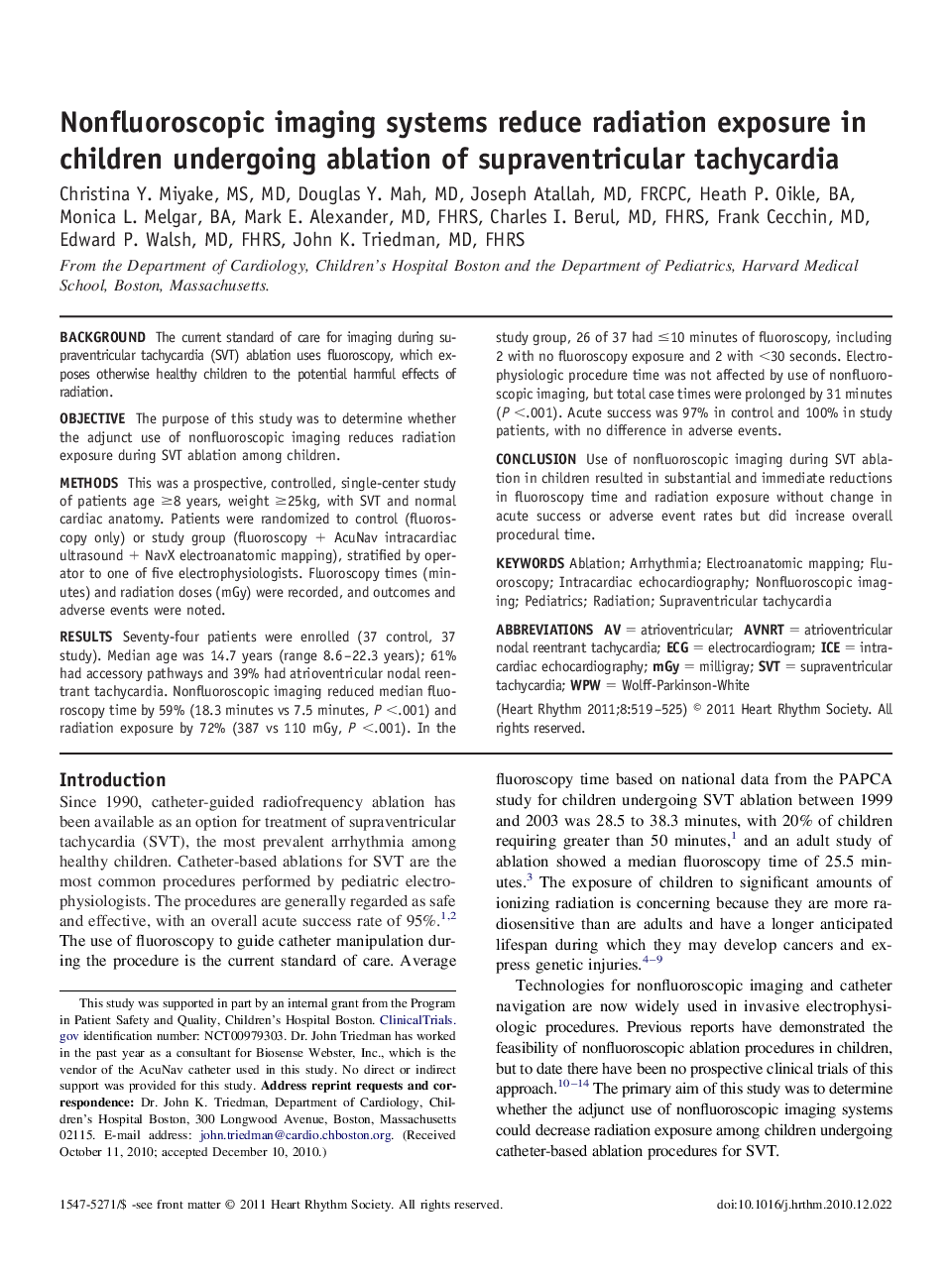| کد مقاله | کد نشریه | سال انتشار | مقاله انگلیسی | نسخه تمام متن |
|---|---|---|---|---|
| 2923479 | 1175875 | 2011 | 7 صفحه PDF | دانلود رایگان |

BackgroundThe current standard of care for imaging during supraventricular tachycardia (SVT) ablation uses fluoroscopy, which exposes otherwise healthy children to the potential harmful effects of radiation.ObjectiveThe purpose of this study was to determine whether the adjunct use of nonfluoroscopic imaging reduces radiation exposure during SVT ablation among children.MethodsThis was a prospective, controlled, single-center study of patients age ≥8 years, weight ≥25kg, with SVT and normal cardiac anatomy. Patients were randomized to control (fluoroscopy only) or study group (fluoroscopy + AcuNav intracardiac ultrasound + NavX electroanatomic mapping), stratified by operator to one of five electrophysiologists. Fluoroscopy times (minutes) and radiation doses (mGy) were recorded, and outcomes and adverse events were noted.ResultsSeventy-four patients were enrolled (37 control, 37 study). Median age was 14.7 years (range 8.6–22.3 years); 61% had accessory pathways and 39% had atrioventricular nodal reentrant tachycardia. Nonfluoroscopic imaging reduced median fluoroscopy time by 59% (18.3 minutes vs 7.5 minutes, P <.001) and radiation exposure by 72% (387 vs 110 mGy, P <.001). In the study group, 26 of 37 had ≤10 minutes of fluoroscopy, including 2 with no fluoroscopy exposure and 2 with <30 seconds. Electrophysiologic procedure time was not affected by use of nonfluoroscopic imaging, but total case times were prolonged by 31 minutes (P <.001). Acute success was 97% in control and 100% in study patients, with no difference in adverse events.ConclusionUse of nonfluoroscopic imaging during SVT ablation in children resulted in substantial and immediate reductions in fluoroscopy time and radiation exposure without change in acute success or adverse event rates but did increase overall procedural time.
Journal: Heart Rhythm - Volume 8, Issue 4, April 2011, Pages 519–525